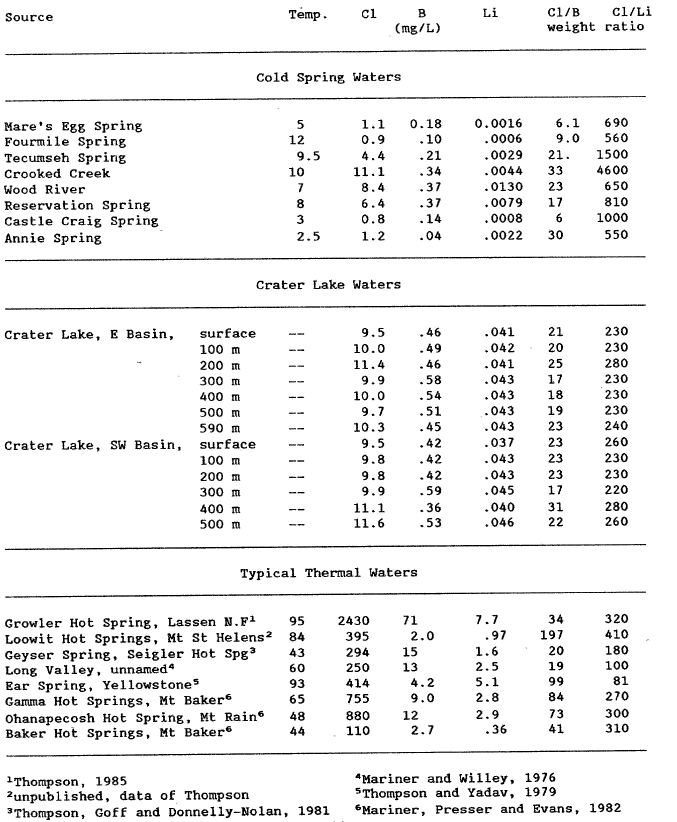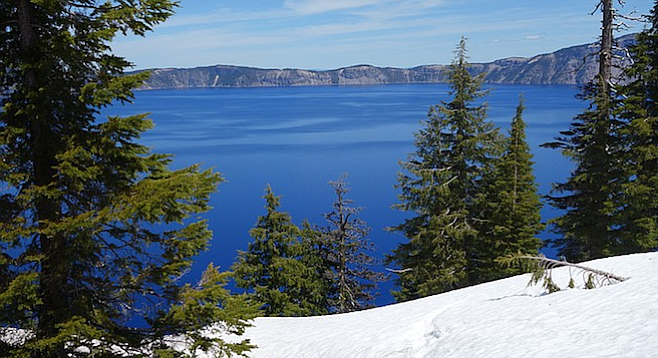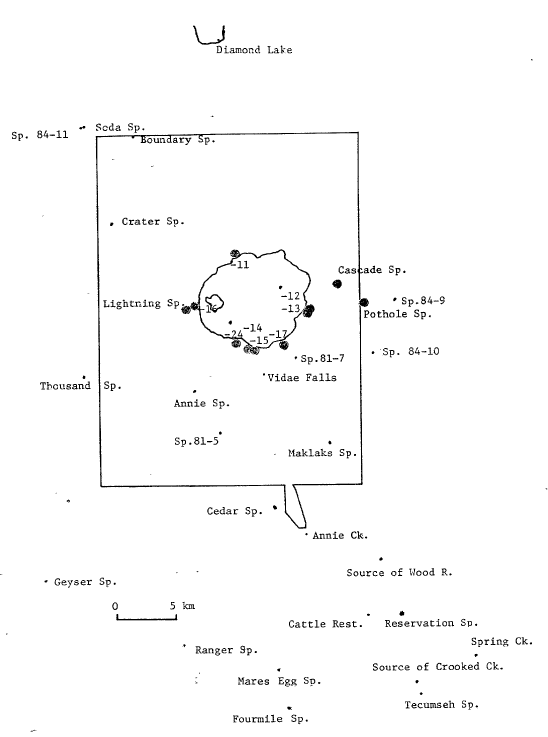When deuterium is compared to chloride for Crater Lake and the cold-spring samples, a few samples show elevated chlorides, but the combination of mixing in the isotope plot of figure 3 and figure 4 permits some of these to be ruled out as containing a large fraction of Crater Lake water. Based solely on Cl and SD, the spring on Hamaker Creek (Spring 84-11 on Figure 1, with Cl = 4.2 mg/L, SD = -90 0/oo) could be a mixture of 40 percent normal spring water and 60 percent Crater Lake water (Figure 4). However, its plotted value in Figure 3 is near the meteoric water line, indicating that it has no more than a small percentage of Crater Lake water. The six data points below the lines on Figure 4 appear to have similar isotopes with varying amounts of chloride; they cluster together on Figure 3 with similar values of deuterium and oxygen-18 isotopes. They do not appear to contain any significant fraction of Crater Lake water. These springs are located southeast of Crater Lake (figure 2). These springs may be dissolving chloride and boron from sediments of the receding Agency Lake. One of these springs, the source of the Wood River, was initially thought to be a good candidate for containing a significant fraction of Crater Lake water because of its high chloride concentration (Williams and Von Herzen, 1983); however, the isotopic data show that this is unlikely. Several springs have somewhat elevated chloride concentrations and isotopes that are in the correct range to have a few percent of Crater Lake water (Annie Spring 1984 sample, Ranger, Crater, and Fourmile springs); however, none of these have a sufficiently high concentration of chloride to have a clearly demonstrated contribution from Crater Laker.- Ranger and Fourmile Springs are located far south and probably in a separate drainage area and are unlikely to contain any significant Crater Lake water. Crater Spring plots slightly along a mixing trend in figure 3 (shown as a filled square) and along a SD – Cl trend in figure 4 and, thus, may contain some lake water. Crater Spring, however, cannot contain more than seven percent Crater Lake water. Other springs could have small fractions of Crater Lake water as shown by their position on Figure 4. No single spring is convincingly demonstrated to contain a substantial amount of Crater Lake water. This is not surprising as the total flow of springs discharging on Mount Mazama is many times the 89 cfs seepage from Crater Lake calculated by Phillips (1968).
 |
| Table la. Chemical Analyses of Springs in the Vicinity of Mount Mazama |



